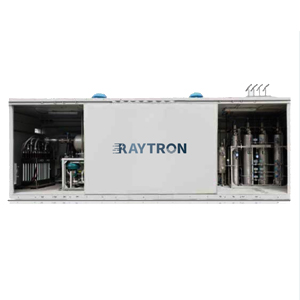1. Introduction to Green Hydrogen
Green hydrogen, produced through water electrolysis powered by renewable energy, is projected to capture 22% of the global energy market by 2050 (Hydrogen Council, 2023). This article examines the technological pathways, economic considerations, and geopolitical implications of green hydrogen development.
2. Electrolyzer Technologies
2.1 Alkaline Electrolyzers (AEL)
- Technical Specifications:
- Electrolyte: 30% KOH solution
- Temperature range: 60-80°C
- Current density: 0.2-0.4 A/cm²
- Efficiency: 62-70% (LHV)
- Market Leaders:
- Thyssenkrupp (20 MW modules)
- McPhy (Alkaline 30 bar systems)
2.2 PEM Electrolyzers
- Advancements:
- Iridium catalyst loading reduced to 0.5 mg/cm² (2023)
- 3D printed titanium bipolar plates
- Performance Data:Parameter202020232025 TargetStack cost ($/kW)1,200800500Lifetime (hours)30,00060,00080,000
2.3 Solid Oxide Electrolyzers (SOEC)
- Breakthroughs:
- Ceres Power’s steel-supported cells (degradation <1%/1000h)
- 93% efficiency at 700°C (DTU Energy, 2023)
3. Renewable Energy Integration
3.1 Direct Coupling Architectures
- PV-electrolyzer configurations eliminating DC-DC converters
- Wind farm clustering for stable power supply
3.2 Hybrid System Performance
| Location | Configuration | Capacity Factor | LCOH ($/kg) |
|---|---|---|---|
| Chile | PV + Battery | 68% | 3.15 |
| North Sea | Offshore Wind | 72% | 4.20 |
| Australia | PV + Wind | 78% | 2.85 |
4. Global Project Landscape
4.1 Mega-Projects Under Development
- NEOM Green Hydrogen (Saudi Arabia):
- 4 GW electrolysis capacity
- 600 t/day production
- $8.4 billion investment
- HyDeal Ambition (Europe):
- 95 GW solar portfolio
- €1.50/kg target price
5. Economic and Policy Analysis
5.1 Cost Reduction Pathways
- Electrolyzer Learning Rate: 16% cost reduction per doubling of capacity
- Balance of Plant Innovations:
- Containerized systems reducing installation costs by 40%
5.2 Policy Frameworks
- EU Renewable Energy Directive III:
- 50% renewable content requirement by 2027
- US Inflation Reduction Act:
- $3/kg production tax credit
6. Challenges and Solutions
6.1 Infrastructure Bottlenecks
- Pipeline Blending Limits:
- Current tech allows 20% H₂ in natural gas pipelines
- 100% H₂ pipelines under development (European Hydrogen Backbone)
6.2 Standardization Needs
- ISO/TC 197 Updates:
- New standards for maritime hydrogen transport
- Safety protocols for large-scale storage
7. Future Outlook
DNV projects green hydrogen will reach cost parity with gray hydrogen by 2030 in optimal locations, with global production exceeding 10 million tons annually by 2035.

